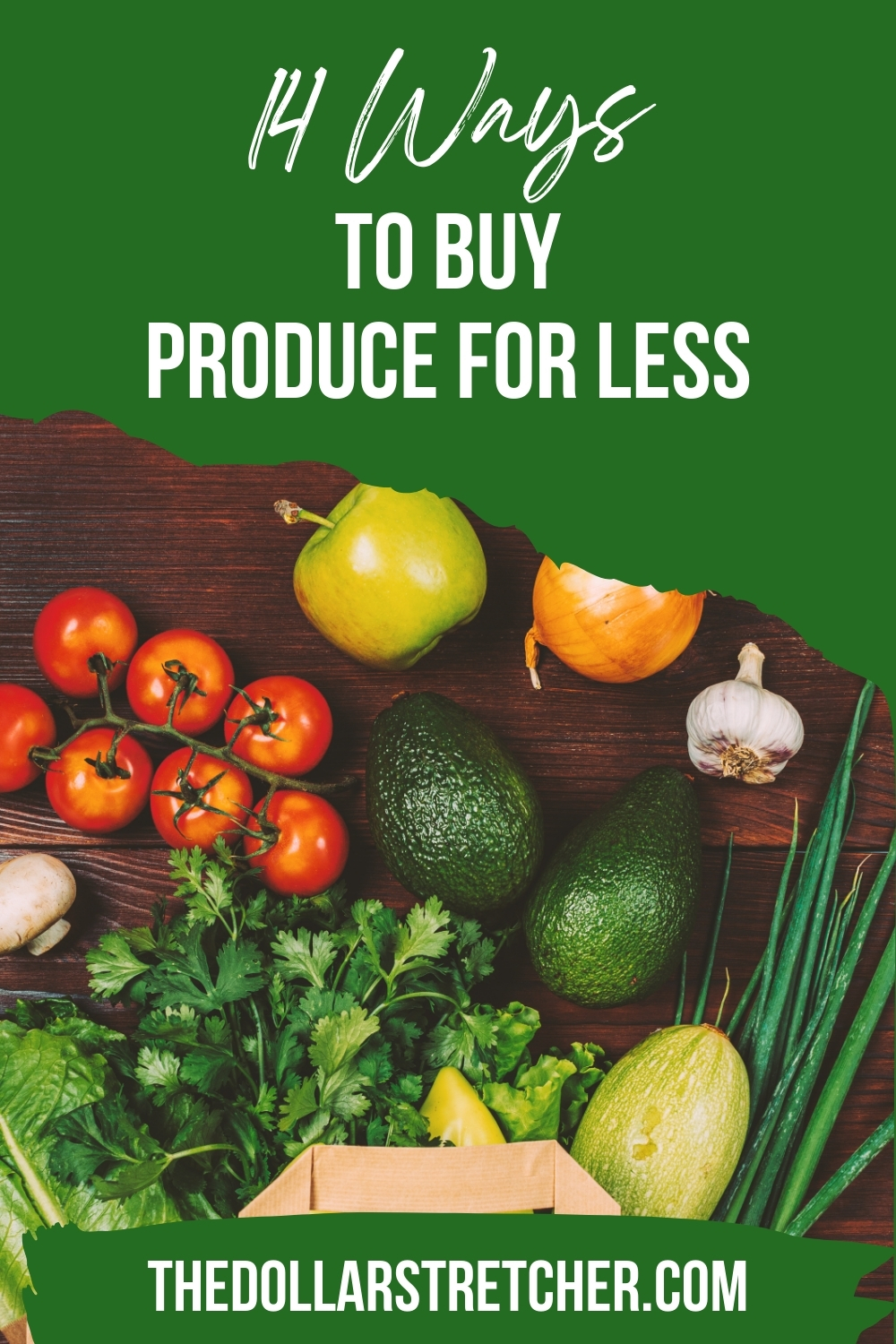14 Ways To Buy Produce for Less
In this article: Ways to save money on produce that can have your family eating more greens (and reds and blues and yellows and oranges) for less green.

Are you on a mission to get your family to eat healthier? You go to the store to stock up on fruits and vegetables, only to be halted by the high prices, especially on fresh produce. Stick to your produce plan by learning some tricks for buying produce for less.
I spoke with Craig Crosby of Sunmart Foods in North Dakota. He said that there are many ways to save money on produce, including watching for promotions like buy one, get one free, or getting free items with another purchase. Typically, items go on sale when they are most available, which leads me to the first and probably the most important tip on buying produce.
1. Shop in season.
There is a reason corn and cucumbers are practically given away in August and September, namely supply and demand. Likewise, you’ll pay a small fortune for watermelon in winter. Stick to frozen and canned options when buying out-of-season fruits and veggies.
2. Check bulk buys against single or unit prices.
You can usually save when buying in bulk. However, bigger isn’t always better. Do price comparisons to ensure you’re truly saving.
3. Only buy what you will use.
Even if bags of carrots are on sale for cheap, buying too many leads to wasting what you can’t eat. Once again, canned or frozen options might be a better option if you often have to toss your fresh produce purchases in the trash.
Sign Up for Savings
Subscribe to get money-saving content by email that can help you stretch your dollars further.
Twice each week, you'll receive articles and tips that can help you free up and keep more of your hard-earned money, even on the tightest of budgets.
We respect your privacy. Unsubscribe at any time.
4. Plan your meals around sale produce.
When corn on the cob is inexpensive in the summer, plan on having it several times for a barbecue cookout, a picnic, or an old-fashioned Sunday dinner. Your grocery store’s weekly sales ad will usually highlight the best buys on produce.
5. Stock up when a terrific bargain shows up.
If you freeze or can the extras, you can cash in on the savings for months. Just don’t stock up on fresh produce if you don’t have the time or space to preserve it before it goes bad.
6. Go in with a friend for bulk purchases.
No need to pass up “big” bargains. Share the savings on that case of peaches or 20-pound bag of potatoes. (And use these tips to store your potatoes properly.)
7. Join a produce co-op.
Produce co-ops, also called CSAs, buy produce in bulk from local farmers and divide it among the co-op members. A co-op can often be the cheapest way to buy produce. Do a Google search to see if you have a produce co-op in your area.
8. Get to know your grocery store’s produce people.
Your friendly produce manager can extend discounts or let you know when things will go on sale.
Crosby mentioned that the store will often run in-store specials that don’t appear in the weekly ads, so always check the produce section.
9. Weigh prepackaged bags to make sure they are not “light.”
A five-pound bag of apples doesn’t always weigh five pounds so weigh your produce picks before putting them in your cart. Sometimes, you can even score an extra apple or two in a heavier three-pound or five-pound bag.
10. Check if your store has a return policy.
Sunmart offers double your money back for inferior produce. Generally, you have to bring back the offending item and your receipt.
11. Visit your local farmer’s market.
The produce sold at your local farmer’s market is typically grown locally and quite reasonably priced. Many growers certify that they grow “naked” produce with no commercial fertilizers or pesticides.
12. Grow your own!
Even if you weren’t born with a green thumb, almost everyone can grow at least some of your family’s favorites, like tomatoes, potatoes, onions, carrots, peas, cucumbers, pumpkins, or watermelon.
If you don’t have room for a garden, set up some pots on your patio, balcony, or even on a sunny windowsill. Nothing beats that homegrown taste or the satisfaction of harvesting the fruits of your labor.
13. Consider community gardening.
If you can’t grow produce at home, check with your local Chamber of Commerce or ask at the Farmer’s Market about any community gardens in your area. Often, you can grow a row or two for free, or pay a small fee for a larger plot.
14. Barter with someone who has a garden.
Do you admire your neighbor’s bountiful garden? Offer to make them some baked goods or weed their planters in exchange for some of their harvest.
There Are Plenty of Ways To Buy Produce for Less
Banish the myth that eating healthier is more costly. By utilizing these tips, you can easily save money on your produce purchases.
Now, does anyone want some cucumbers? Anyone?
Reviewed January 2024
About the Author
Shaunna Privratsky became an expert in personal finance out of necessity. Between writing, reading and gardening, she is always on the lookout for bargains. Visit her at The Discount Diva.
Popular Articles

On After50Finances.com
- 9 Things You Need to Do Before You Retire
- You Didn’t Save Enough for Retirement and You’re 55+
- When Empty Nesters Reorganize and Declutter Their Home
- Reinventing Your Career in Your 50s or 60s
- What Mature Homeowners Should Know about Reverse Mortgages
- 2 Reasons to Collect Social Security Benefits As Soon As Possible


